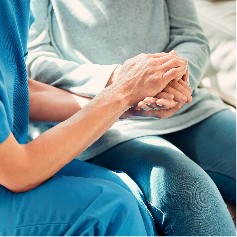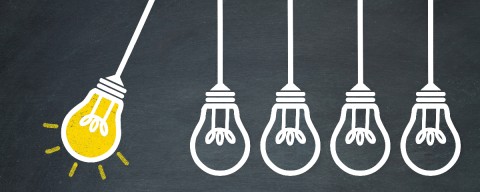From DME to RPSGT
Matthew McClain has the RPSGT and CCSH credentials. He's been working in the Sleep Industry for more than a decade. Read about his journey to becoming a Registered polysomnographic technologist.
The BRPT accepts several different pathways to become eligible to sit for the RPSGT exam. One of those pathways is on-the-job training. Most of your education comes from clinical experience. Approved self-study modules are also needed. Here's a story about a technologist who became an RPSGT via this pathway.
Matthew McClain learned about the sleep medicine industry by working at a DME company. The longer he worked in DME, the more interested in sleep he became. After some time, he wanted a change and a challenge, so he decided to pursue a sleep technologist role.
The education and first month of work was somewhat difficult for Matthew. But he was able to settle in eventually and found the test prep and passing the RPSGT exam not difficult at all. His main study resources were the AASM scoring manual and the textbook Essentials of Polysomnography. His goal was to memorize the scoring manual and he read through it 100 times. (Psst…this is a good goal to have during test prep)
Day in the life of an RPSGT.
Matthew started his sleep tech career in 2011 and currently he is working at 2 different sleep labs in 2 different roles. He is a night technologist responsible for running sleep studies, completing reports, and prepping everything for the physician before he leaves in the morning. At his other lab he over scores sleep studies from the previous night, assists with scheduling, and sometimes he gets to see patients in the clinic.
The CCSH credential opened a world of opportunity for technologists. Matthew has the RPSGT credential as well as the CCSH. Here's how he utilizes the CCSH credential during his workday.
What can you do with the CCSH credential?
"When the opportunity arises, I utilize my CCSH skills/knowledge with troubleshooting patient challenges. Many times, it's after a patient is on a PAP, but their compliance is not where it needs to be, or their leak is high while at home, things like that. Then I take the time to talk to the patient and breakdown what their specific complaint is and address it.
Many times (most times) it's a mask challenge. It's the wrong size or they are over or under tightening the mask to their face. Once I take the time to educate them about the fit, place it on them, and show what I was explaining, then I begin seeing successes.
Providing support to sleep physicians.
Most times, I do a follow-up call the next day to see how the patient feels about that change. This is the kind of thing that a doctor doesn't typically do, fit a mask day in and day out, so they aren't as precise as a technologist would be with fitment, so they rely on my expertise. I also pride myself on listening to the patient's complaints (what got them to the lab in the first place!) and reading the doctors medical history and explaining how these things relate to sleep apnea. Once they have had a study done, I go over every detail of the report from their study, re-emphasizing the relation of their complaints (high blood pressure, diabetes, weight gain, etc.) to sleep apnea thus reinforcing the importance of commitment to treatment.
At times, I have been able to offer up my opinion on how a patient looked on different pressures from their sleep study when a doctor wanted to change the pressure. These calls are my favorite call because I'm helping make a clinical decision of what's best for the patient," Matthew said.
When Matthew was searching for a job in the beginning, it was a challenge to get an interview. Times have changed since then, but Matthew had to move 5 states away to land a job as a sleep tech. He couldn't get an interview close to home, so he moved away for a couple years and was eventually able to return home as an experienced sleep tech. All the doors were open at this point.
What's on the horizon?
Running studies overnight for years can be tough. The good news is there are opportunities available for those with credentials and the experience earned from overnight work. Matthew's future goal is to create and institute a clinical sleep health program for his facility. Programs like these have had great success at discovering undiagnosed sleep disorders and increasing utilization of diagnostic testing. Matthew has been thinking about this goal for a few years but also enjoys teaching and training new techs. He would like to pursue roles in that area as well.
Overall, Matthew has loved his career, believes it is full of promise, and there is always something to learn.
When you subscribe to the blog, we will send you an e-mail when there are new updates on the site so you wouldn't miss them.







Comments